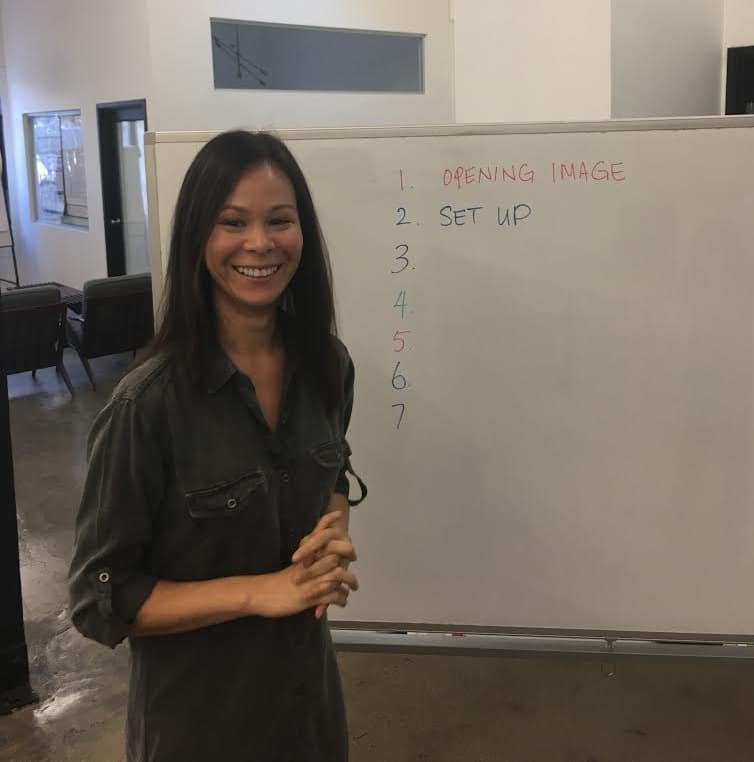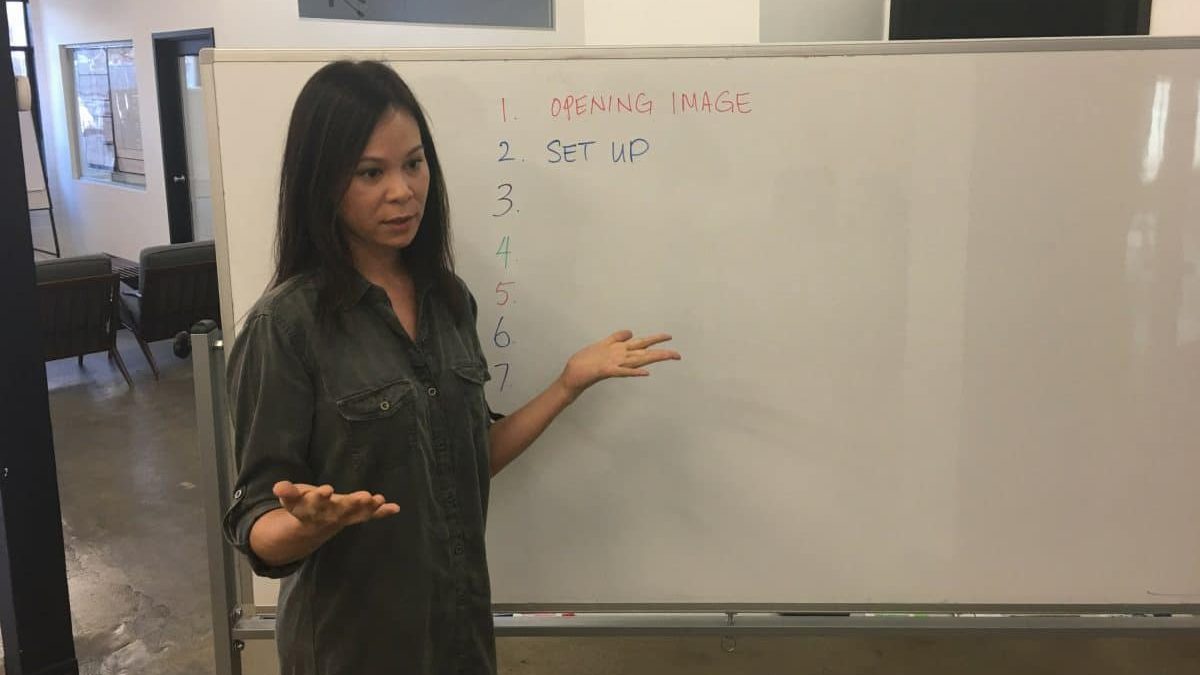
 In response to a question from Brian, one of her online beat sheet screenwriting workshop students, Naomi Beaty shows how you can create an arc for your protagonist. Have you set up the key points to make your hero’s transformation pay off? How do you make the transformation “organic” and believable? Where does your protagonist start… and what points along the way shape his or her shifting world view? Hear how you can use Blake Snyder’s story beats to put a fine point on your hero’s transformation!
In response to a question from Brian, one of her online beat sheet screenwriting workshop students, Naomi Beaty shows how you can create an arc for your protagonist. Have you set up the key points to make your hero’s transformation pay off? How do you make the transformation “organic” and believable? Where does your protagonist start… and what points along the way shape his or her shifting world view? Hear how you can use Blake Snyder’s story beats to put a fine point on your hero’s transformation!
Podcast: Play in new window | Download
Subscribe: Apple Podcasts | RSS
Naomi Beaty
Naomi Beaty, a screenwriter and script reader in Los Angeles, teaches our online beat sheet screenwriting workshops, our in-person weekend intensive workshops, and hosts our STC! podcasts. Visit her online home and get access to the new library of downloadable screenplays and screenwriting resources.
16 Comments
Leave a Reply Cancel reply
You must be logged in to post a comment.










Really like the algebra! A line must have 2 points. Character can’t change without a start and finish. One point is not enough. And the arc is not a straight line of 2 points. The story requires many points for impact. I like algebra so good graphic for me. Thanks!
Thanks, Joel! Glad you found it helpful.
Hi Joel — I was just discussing with a colleague of mine how the entire arc looks a lot like a sine curve from x = 0 to x = 2pi. The visual aids really do help, don’t they? :)
It seems like the discussion of transformation needs to be much more ubiquitous throughout the STC process. I remember being let down by the way STC deals with Transformation. The book holds it up as the holy grail of story, which I personally agree with, but then doesn’t seem to follow through with a tangible, organic method for creating and tracking that transformation. It seems to me that if you’re thinking about 6 things that need to be fixed, it can rarely lead to a true organic transformation, unless each of those six things are intrinsically connected to the theme of the story. And then each beat needs to be connected to that transformation. If I remember correctly from STC, the hero’s transformation is not tracked beat to beat, but admittedly it’s been over a decade since I last read the book. I do read the articles and blogs from the newsletters though.
Thanks, Glenn. Not sure if you’ve read Book 3. Blake goes a lot deeper into transformation there.
Hey Naomi — like the new bitesize podcats, informative & pointed.
As a general answer, I think what you said is accurate and fair. It all counts as a whole in the end. My beatsheets tends to be quite pointed and short punchy statements. Ensuring transformation is seeming constant and logistically plausible I tend to focus on when cracking the 40 Cards, but that’s me.
My thoughts on which beat matters the most:
1) In terms of cracking your story, I’ve found it often varies on a per story basis, but personally, I find it’s Theme Stated more often than not. I also find figuring that one out most rewarding. Sometimes, it’s the first thing I start with, while other times, I need to spend time with my characters & plot both to really juice it out.
2) In terms of results, I find reflecting on the opening & closing images as a great way to be sure you achieved what you’d set out to.
Thank you for the kind words! And you’re so right — every story is a new challenge so different stories probably lean on different beats more in the development phase.
As a fellow “Cat” devotee (I took Ben Frahm’s workshop in New York over the summer), I will commit an act of blasphemy here and say that while I love “Save the Cat” for showing me the light of day in terms of visualizing my stories in 15 beats – I wish it had been around back in 1992 when I wrote my first screenplay – I treat it as a tool in my collection, albeit a very valuable one. Blake may have called “Save the Cat” the last book on screenwriting you’ll ever need, but I seriously doubt he intended it to be only one. For instance, when it comes to getting down to the actual nuts and bolts of formatting your screenplay, there’s probably no better reference source out there than David Trottier’s “The Screenwriter’s Bible”. And getting back to the topic of this discussion, character arc, the source I turn to more than any other is Michael Hauge’s “The Hero’s 2 Journeys”, which can be found in print, Kindle, audiobook, as a class on Udemy (often on sale for a whopping $10), and excerpted for free on youtube.
Yes! Dave Trottier is a go-to for formatting. And I agree — we need a bunch of tools in our toolbox. Learning which to use when comes with experience and practice. Thanks so much for chiming in!
You’re very welcome, Naomi. All the best.
I love the shorter version! I’ll listen to more of them now.
Thank you! I’m glad to hear it :)
Hi, this is a great feature. Do you post a podcast weekly, or monthly? I would love to follow you. Is there a link to past podcasts?
Thanks
Rick MIller
Hi Rick. We haven’t been as consistent as we’d like but are aiming for at least one a month. You can find our past podcasts on iTunes
Love the format and your answer!
Cool! Thanks so much, Roxanne! Glad you enjoyed it.